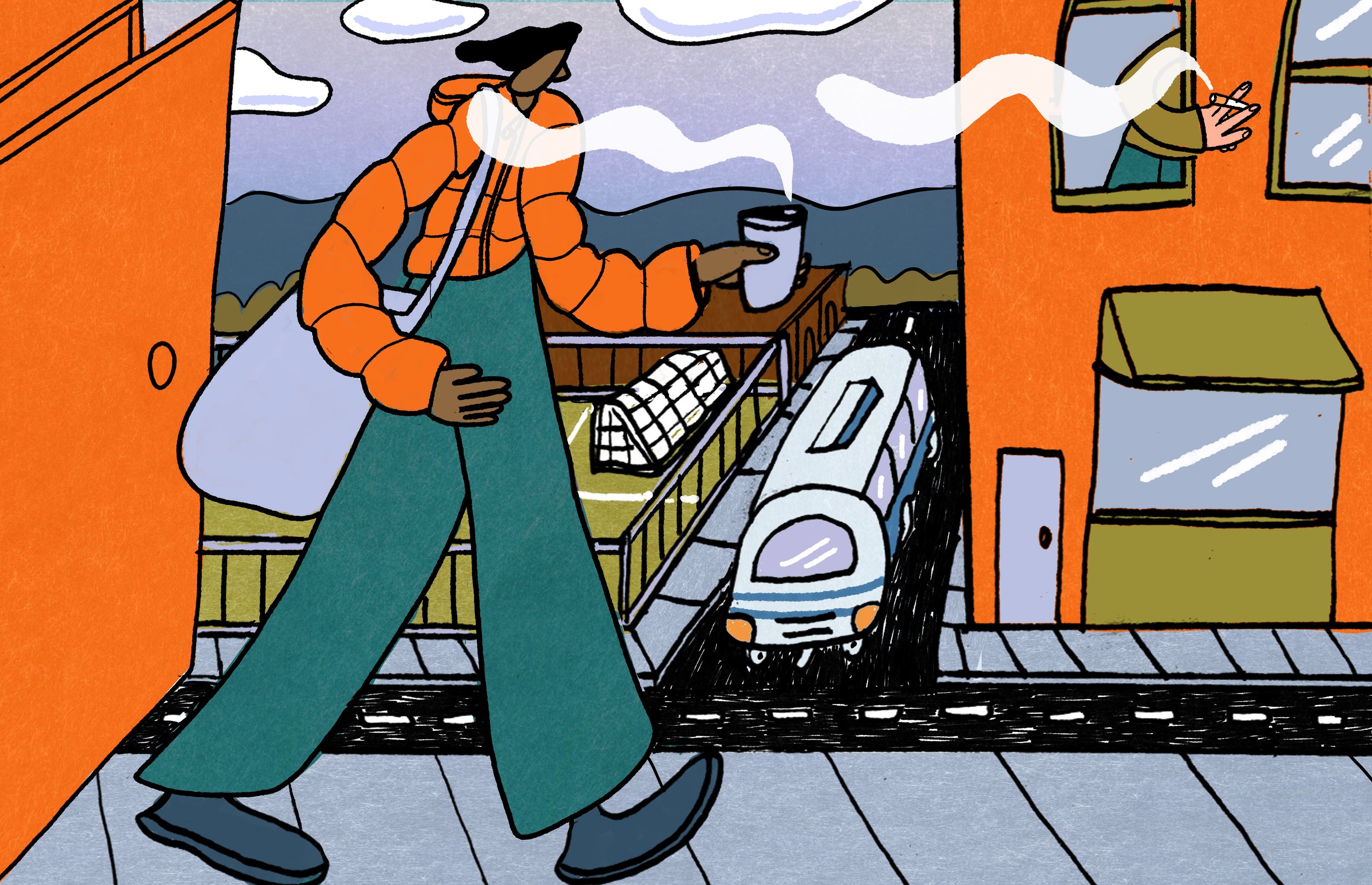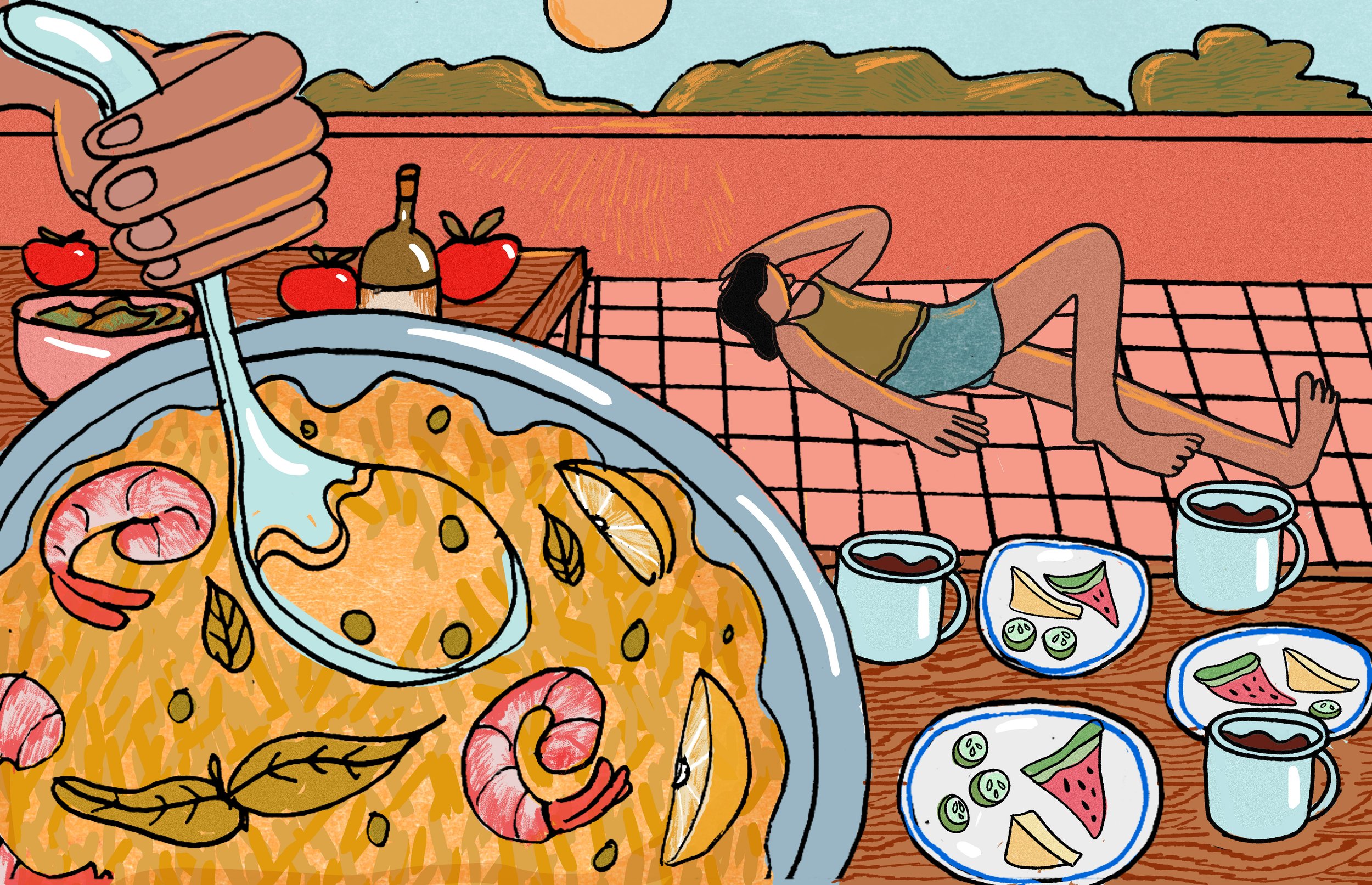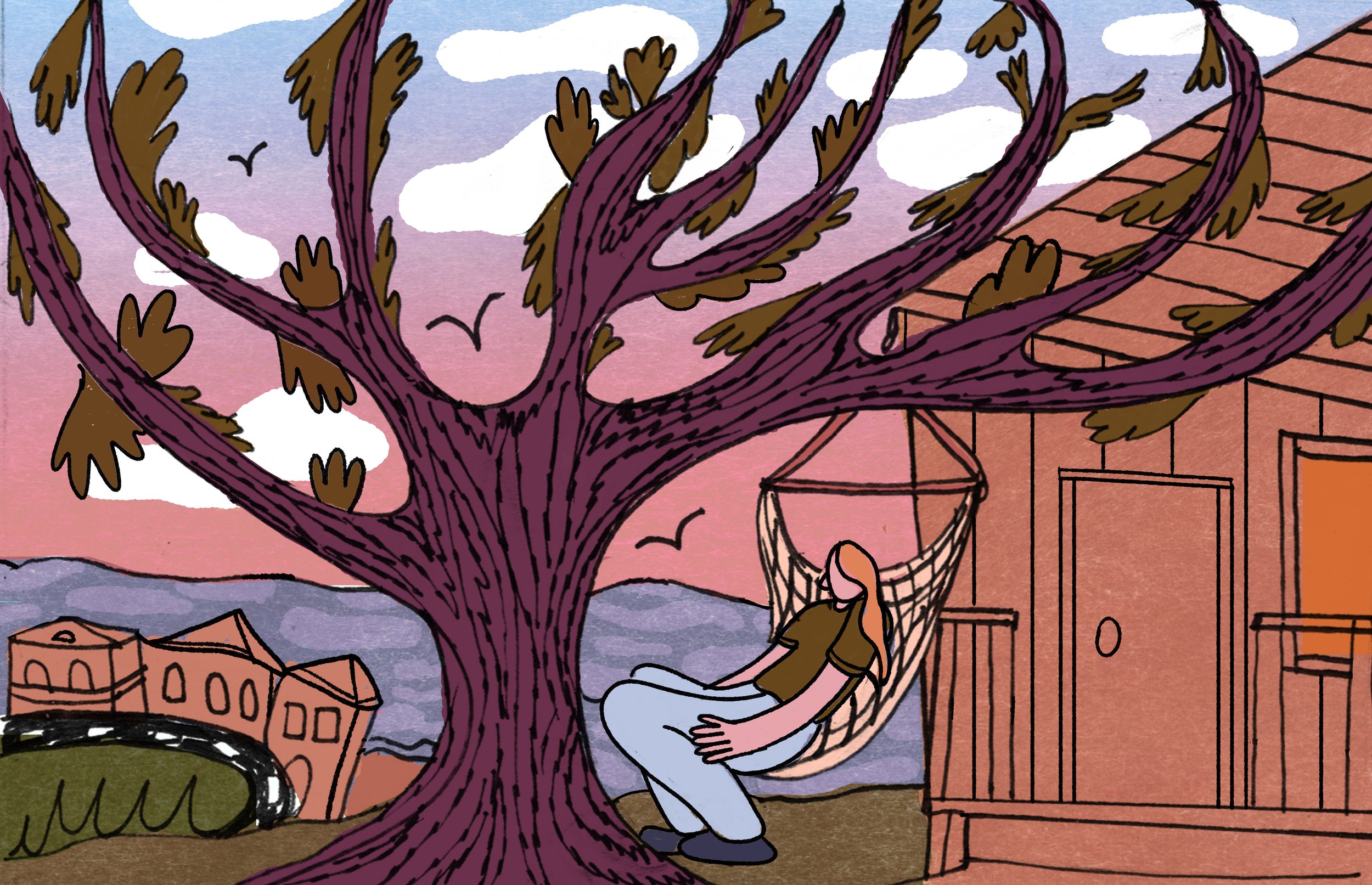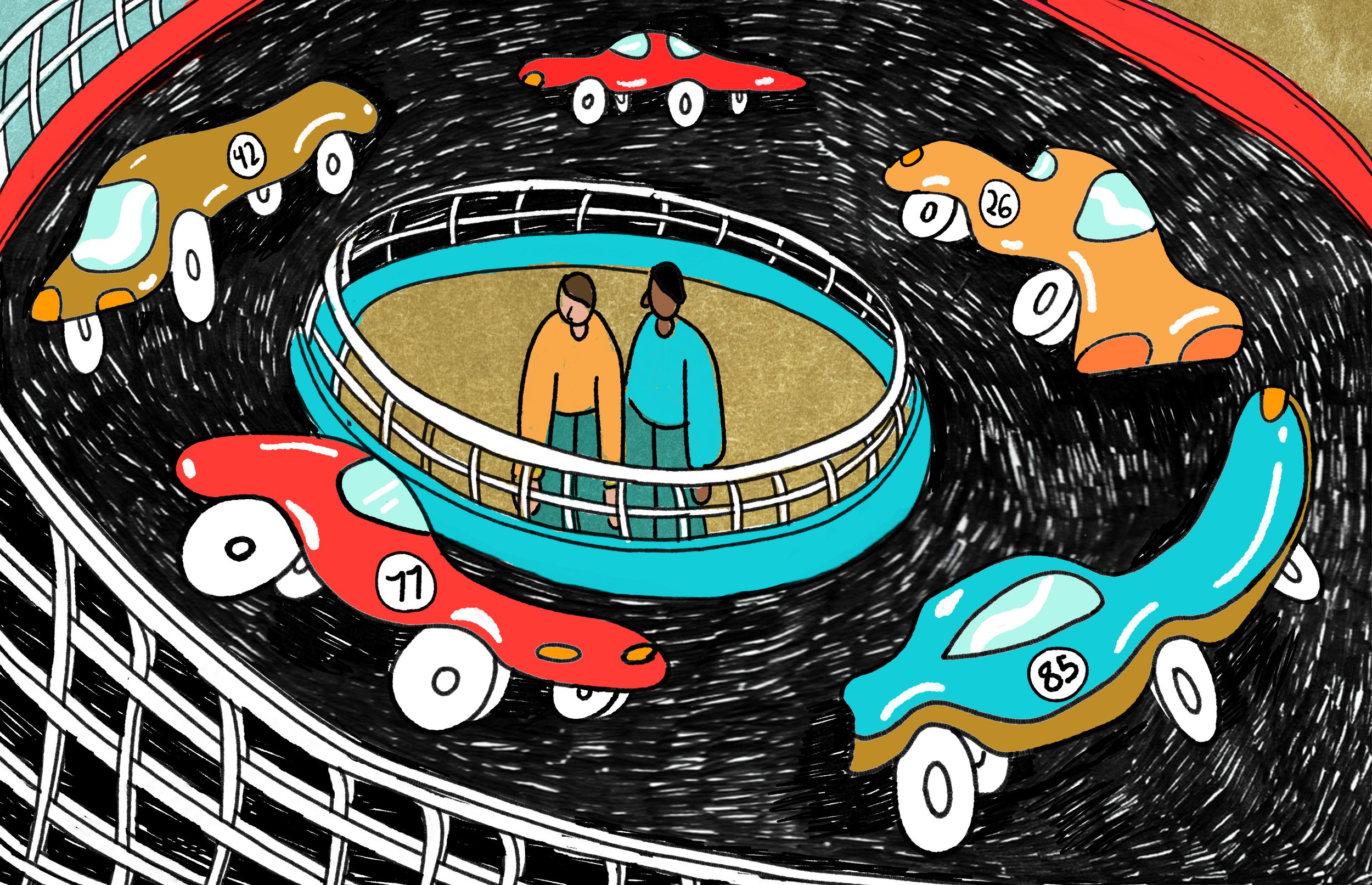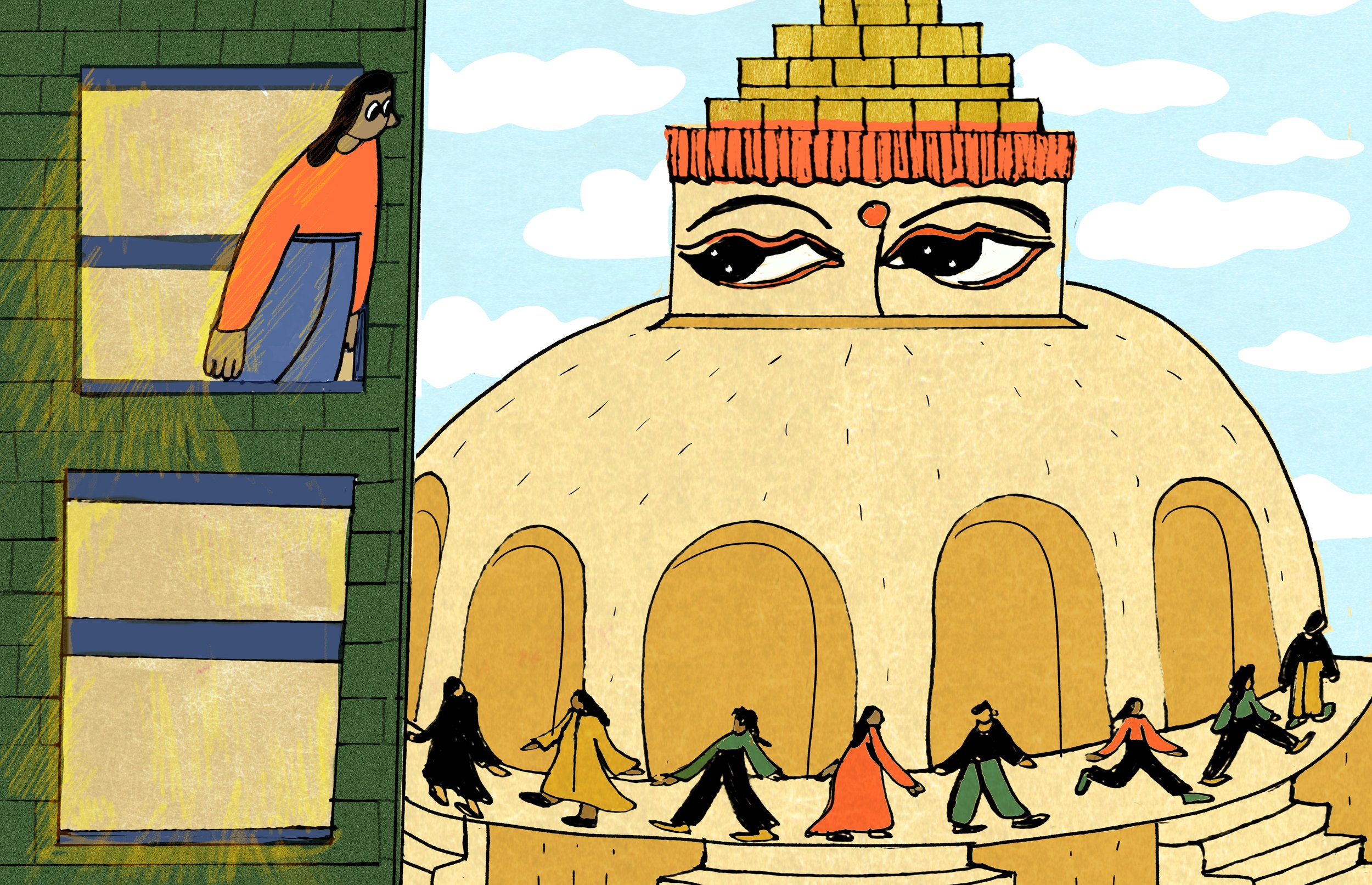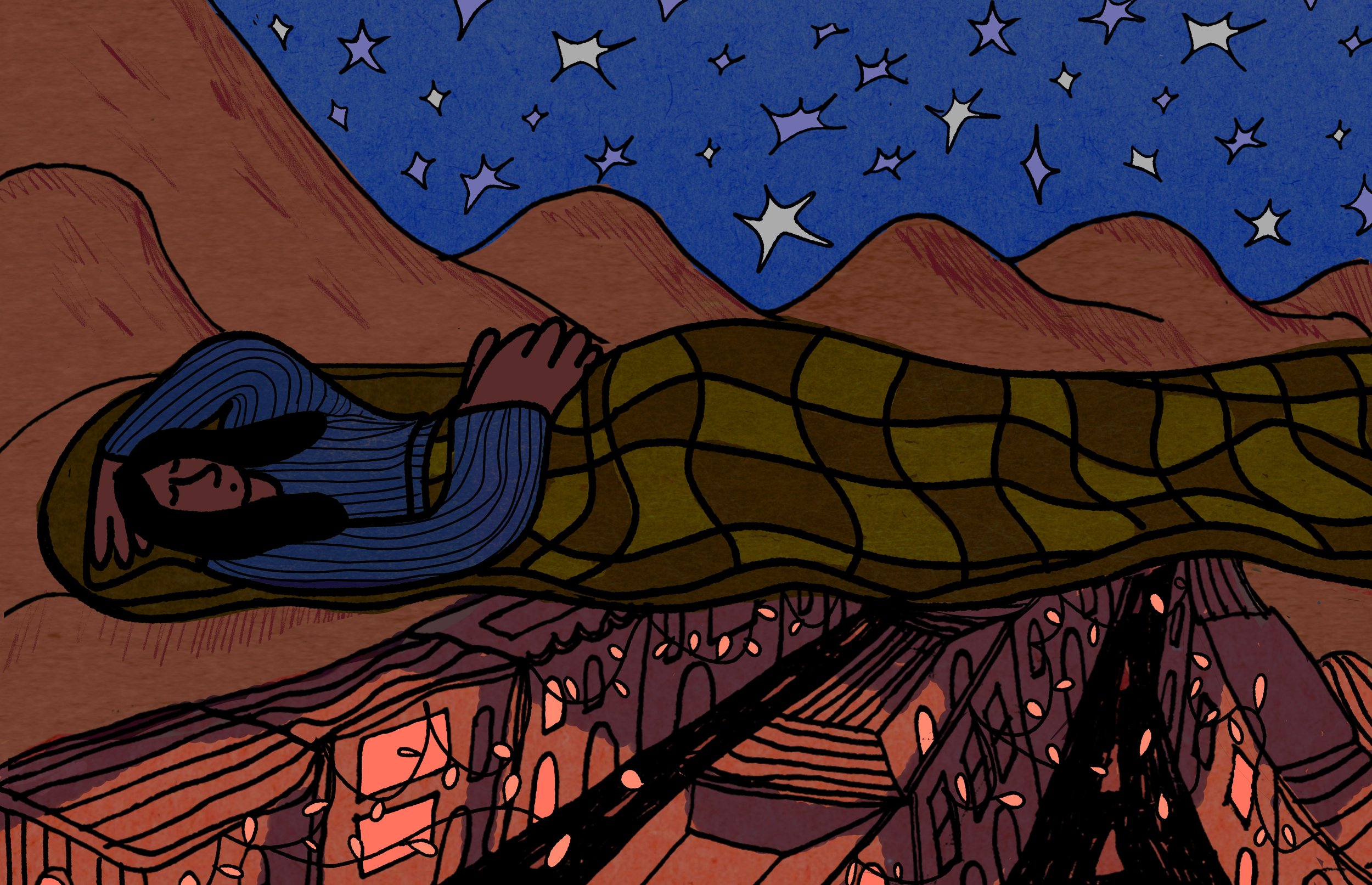7 p.m. in Amsterdam-Oost

7 p.m. in Amsterdam-Oost is yellow cranes, Schiphol-bound jets, and black cats darting between trams.
The florist at Vomar, shuttering a vivid room of slumbering tulips, pauses to wave at a cyclist shouldering her thermal delivery backpack. Trains rattle and blur out of Amsterdam Centraal. From the windows of my seventh-floor apartment, I can name every silhouette interrupting the late summer horizon. On evenings when the air turns thin, I sketch the Basiliek van de Heilige Nicolaas, its towers ornate as cloud formations.
When my Dutch friends ask where I live, I describe not only Het Funen, but the entire Eastern Islands, an eclectic enclave of refurbished windmills and kaftans on clotheslines, graffitied canalways and fashionable window boxes, al fresco cafés and phone repair stores. After a month in Amsterdam, I am unreasonably fond of this oddment of a neighborhood, strangely similar to my jumbled, bustling hometown. When I introduce myself to other exchange students, no one knows where Sri Lanka is, but the Vomar cashier who helped me find the spice aisle last week vacationed on the Bopitiya beach where my aunt grew up.
In this neighborhood, every building is a jewel box, windows flung wide; we don’t believe in curtains, my Dutch friends tell me, because we have nothing to hide. I choose to trust them; I don’t ask if they inherited surnames from the ancestors who colonized mine, and simply enjoy the tacit invitation to witness sundry domestic scenes—video games on assorted screens, married hands drying Blokker plates, the sudden darkening of an IKEA bedroom.
“7 p.m. in Amsterdam-Oost is yellow cranes, Schiphol-bound jets, and black cats darting between trams.”
My roommate returns from work and reminds me that the exterminator is arriving tomorrow to battle the rats who rule our countertop. While I accept our neighbors’ assurances that rodent visitors are a hallmark of Amsterdam living, and that we have finally been initiated, my roommate left behind a climate-controlled Shanghai high rise; to her, rats herald institutional neglect. I agree to meet the exterminator, somewhat ruefully, and any further conversation is interrupted by the American and British voices trickling down from the rooftop terrace which is hosting yet another borrel, one of those post-work gatherings of wine, cheese, and pleasant company dearly beloved by the Dutch.
I decide to avoid the revelry, the detritus of which is tumbling past my window en route to the ground—a cigarette stub, a Heineken cap, a string of paper flags. Instead, I memorize the faint pattern rung by tram bells as they crisscross beneath De Gooyer windmill. Far above, etching filigree trails through a lilac sky scattershot with gold, another airplane ceases its circling and begins the final descent into the city. On the basketball court below, the group of Turkish high schoolers I wave to every morning slalom and shout; their mothers shrug bright coats over their abayas and continue chatting.
About the Author
Lalini Shanela Ranaraja is a multi-genre creative from Kandy, Sri Lanka. She holds a BA in anthropology and creative writing from Augustana College in Illinois, USA. Her work appears in Entropy, Lammergeier, Random Sample, Sky Island Journal, Transition, and elsewhere. View more of her work on her website.
Illustration by Owen Murray


